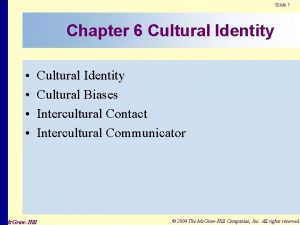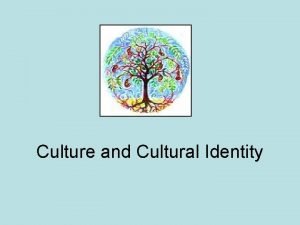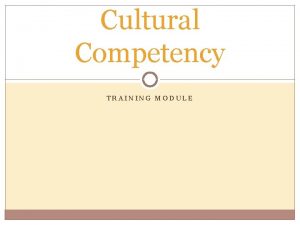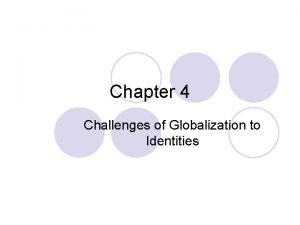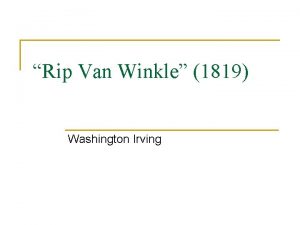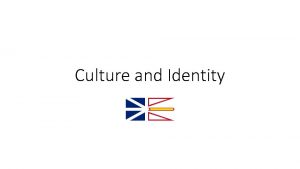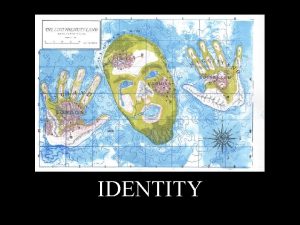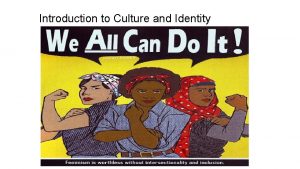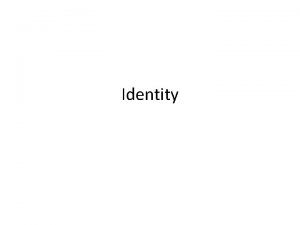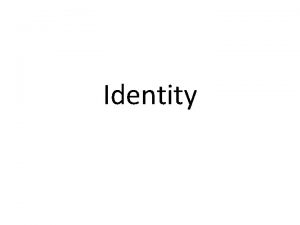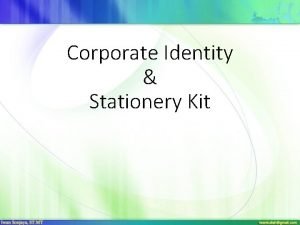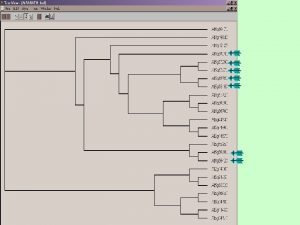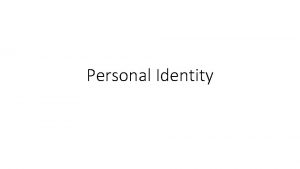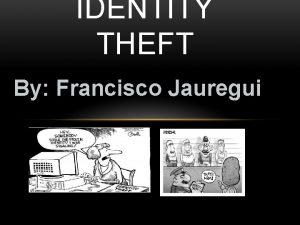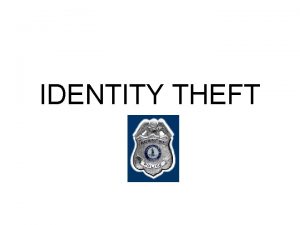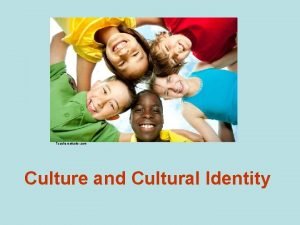Culture and Identity What is culture How does

















- Slides: 17

Culture and Identity What is culture? How does culture shape identity?

What is culture? • Culture is a system of values and beliefs that all societies produce and teach. • It is comprised of elements, including: » » » Language Art Rituals Roles Economic and political structures history

What does this graphic illustration say about culture?

Identity • Identity = our sense of self and place in our social world » » » Physical appearance Ideas of gender Social status Role in society Values Beliefs

Culture and Identity • Our identity is our beliefs about our self and others, which is influenced by our culture • Because these cultural beliefs are shared by a great majority, we often think of these as “truths”. • What are our some of our own cultural assumptions? • How can we become aware of these


Rite of Passage

Introductory Questions • How do different cultures mark the changes in the cycle of life? • What ceremonies have helped you move from one stage of your life to the next? • What is ritual and why is it important to cultures? • When did you become a ‘teen’? How was this occasion marked? How is such a ceremony important?

Rite of Passage • Ceremonies that mark a person’s transition from one role, phase in life or social status, to another • Usually mark significant life changes: birth, puberty, marriage and death • The change is marked by a transitional period, usually involving specific rituals – symbolic activities

Stages of Rites of Passage • Rites of Passage usually involve 3 stages: 1. Separation – removal of individual from society (often includes isolat 2. Transition 3. Incorporation & Reintegration •

Stage 1: Separation • The individual is temporarily removed from society (often just symbolic) • Some rituals involve cutting (rope or ties) or breaking something • Example: Graduation – the graduates are removed and sit apart from their families and teachers • Example: Wedding – bride and groom are separated before wedding and isolated from eachother

Stage 2: Liminal / Transition Stage • Initiate is in the state of transition between the old and the new • Individual is temporarily isolated for a period of time • Usually normal social contact is suspended • Often involves some symbolic journey – walking from one place to another • Example: Graduation – graduates walk across a stage or platform – rep. transition from student to graduate • Example: Wedding – Bride walks down isle towards groom – sometimes bride and groom walk together in a circle or towards eachother

Stage 3: Incorporation • Readmission into society in the newly with public recognition of new social status • Usually involves some symbolic joining of things together or receiving some token • Example: Graduation: Graduates receive a certificate • Example Wedding: Bride and Groom are joined through placing a ring on each others fingers

Purpose • Rites of passage provide society with a way to acknowledge and inform the community about changes in social status of individuals • With change in social status comes change in expectations for behaviour • Example: Graduates – you will be useful and productive (get a job) • Example: Bride and groom – sexual fidelity

Examples of Rites of Passage • Birth ceremonies (baptism, naming, showers) • Birthdays Graduation • Wedding • Death

Coming-of-Age Ceremonies • Rites of passage that mark our transition from childhood to youth to adulthood • These can be formal or informal, public or private, pleasant or painful • They help us to become functioning adults

Examples Informal: • Acquiring drivers license • 16 th / 18 th / 19 th birthday • Dating (we remove ourselves from friends) Formal • Bar / Bat Mitzvah • First Communion • Confirmation • Vision Quest
 Social identity map
Social identity map Why is culture identity important
Why is culture identity important Concept of identity
Concept of identity Cultural competency training modules
Cultural competency training modules Forms of pop culture
Forms of pop culture Fed-batch
Fed-batch Indian vs american culture
Indian vs american culture Stab culture and stroke culture
Stab culture and stroke culture Folk culture and popular culture venn diagram
Folk culture and popular culture venn diagram Leisure
Leisure Tsi
Tsi Homework due today
Homework due today Pour plate method
Pour plate method Robertson cooked meat medium
Robertson cooked meat medium Surface culture deep culture and esol
Surface culture deep culture and esol In what ways does globalization challenge identity
In what ways does globalization challenge identity Rip van winkle allegory
Rip van winkle allegory Individual culture traits combine to form culture patterns.
Individual culture traits combine to form culture patterns.

